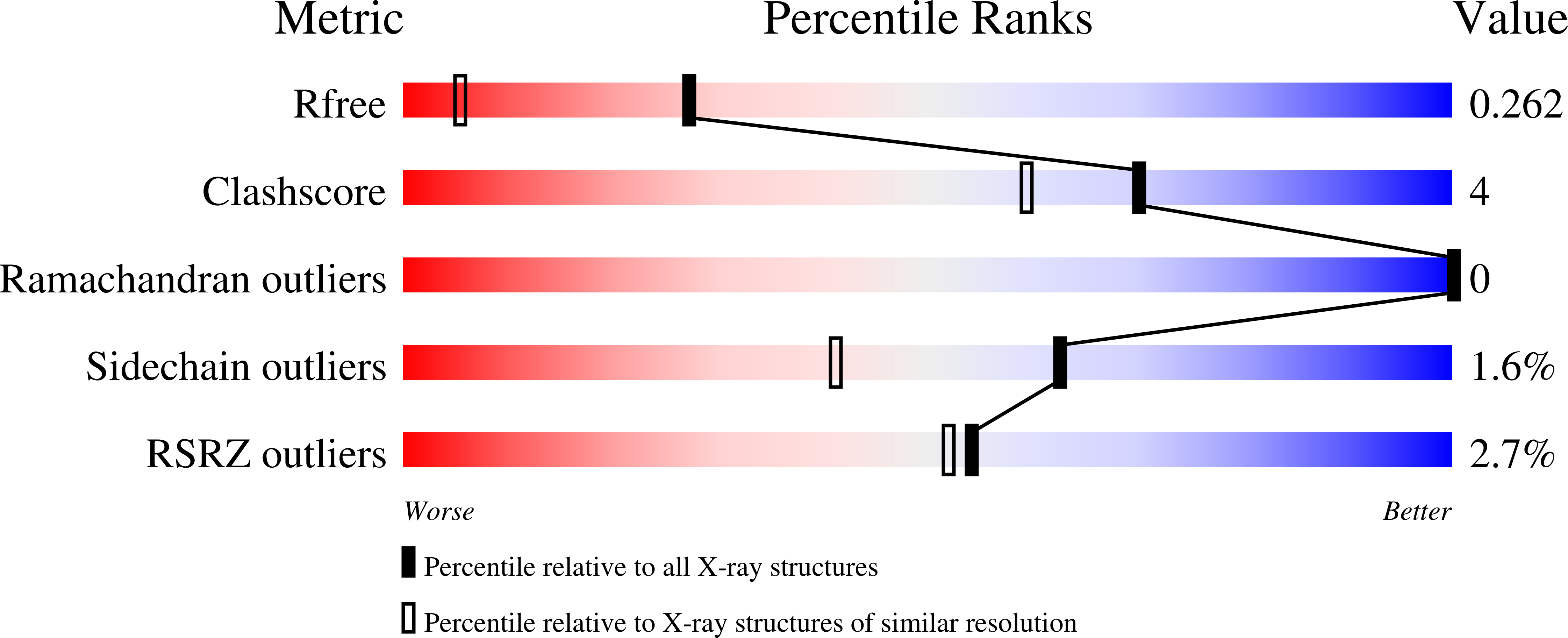Thermodynamics and conformational change governing domain-domain interactions of calmodulin.
O'Donnell, S.E., Newman, R.A., Witt, T.J., Hultman, R., Froehlig, J.R., Christensen, A.P., Shea, M.A.(2009) Methods Enzymol 466: 503-526
- PubMed: 21609874
- DOI: https://doi.org/10.1016/S0076-6879(09)66021-3
- Primary Citation of Related Structures:
3B32, 3IFK - PubMed Abstract:
Calmodulin (CaM) is a small (148 amino acid), ubiquitously expressed eukaryotic protein essential for Ca(2+) regulation and signaling. This highly acidic polypeptide (pI<4) has two homologous domains (N and C), each consisting of two EF-hand Ca(2+)-binding sites. Despite significant homology, the domains have intrinsic differences in their Ca(2+)-binding properties and separable roles in regulating physiological targets such as kinases and ion channels. In mammalian full-length CaM, sites III and IV in the C-domain bind Ca(2+) cooperatively with ~10-fold higher affinity than sites I and II in the N-domain. However, the difference is only twofold when CaM is severed at residue 75, indicating that anticooperative interactions occur in full-length CaM. The Ca(2+)-binding properties of sites I and II are regulated by several factors including the interplay of interdomain linker residues far from the binding sites. Our prior thermodynamic studies showed that these residues inhibit thermal denaturation and decrease calcium affinity. Based on high-resolution structures and NMR spectra, there appear to be interactions between charged residues in the sequence 75-80 and those near the amino terminus of CaM. To explore electrostatic contributions to interdomain interactions in CaM, KCl was used to perturb the Ca(2+)-binding affinity, thermal stability, and hydrodynamic size of a nested set of recombinant mammalian CaM (rCaM) fragments terminating at residues 75, 80, 85, or 90. Potassium chloride is known to decrease Ca(2+)-binding affinity of full-length CaM. It may act directly by competition with acidic side chains that chelate Ca(2+) in the binding sites, and indirectly elsewhere in the molecule by changing tertiary constraints and conformation. In all proteins studied, KCl decreased Ca(2+)-affinity, decreased Stokes radius, and increased thermal stability, but not monotonically. Crystallographic structures of Ca(2+)-saturated rCaM(1-75) (3B32.pdb) and rCaM(1-90) (3IFK.pdb) were determined, offering cautionary notes about the effect of packing interactions on flexible linkers. This chapter describes an array of methods for characterizing system-specific thermodynamic properties that in concert govern structure and function.
Organizational Affiliation:
Department of Biochemistry, Roy J. and Lucille A. Carver College of Medicine, University of Iowa, Iowa City, Iowa, USA.















